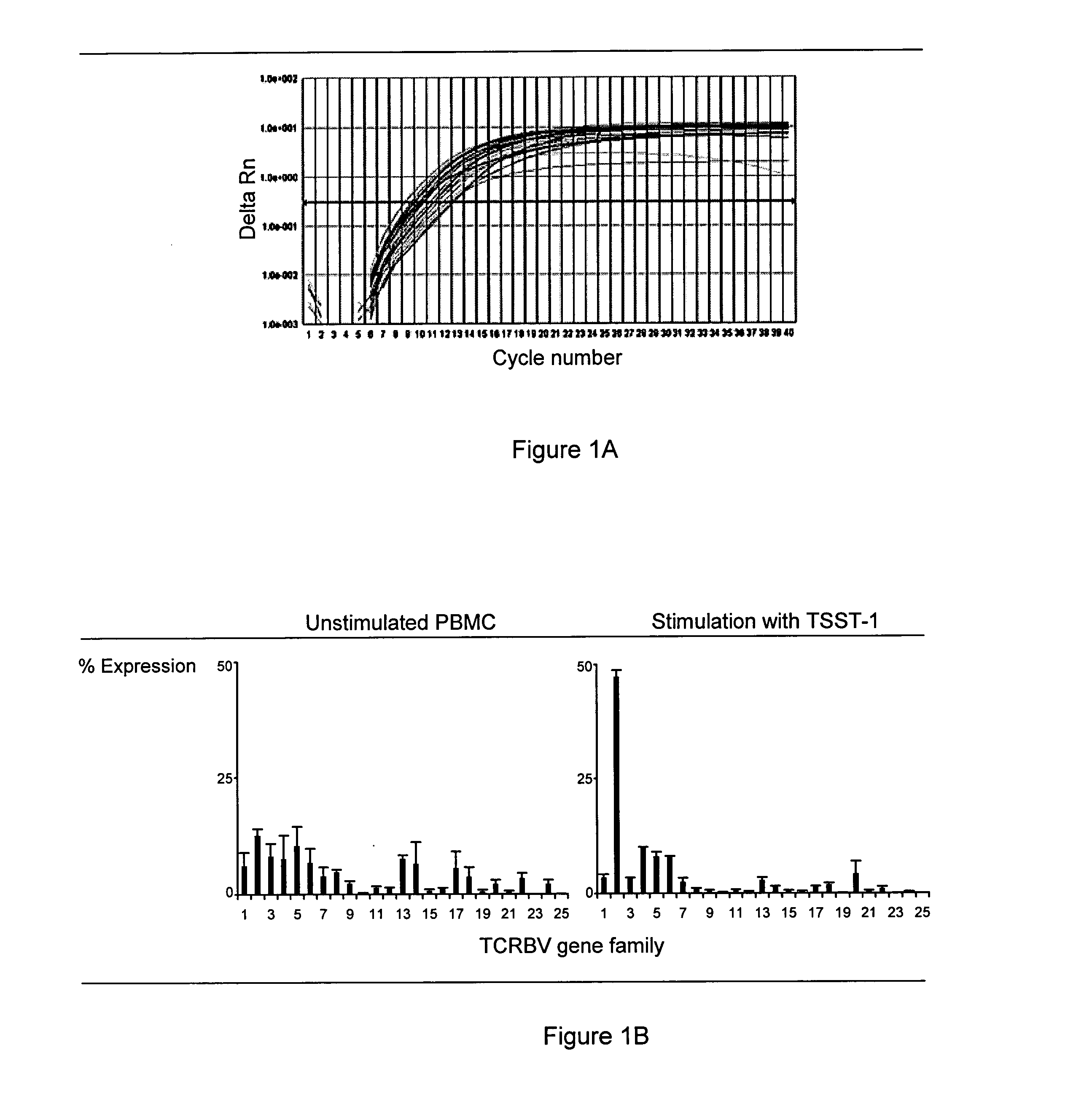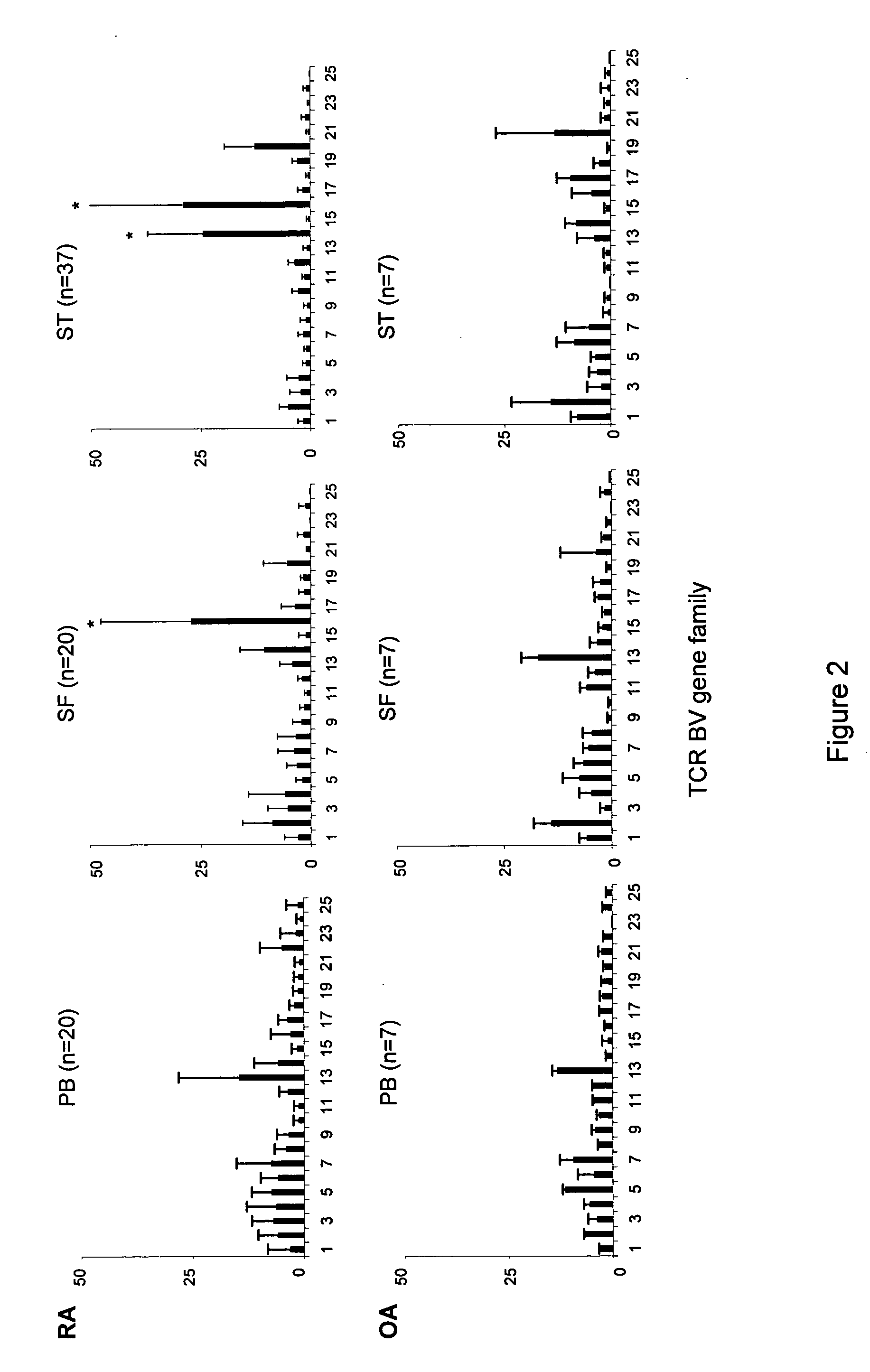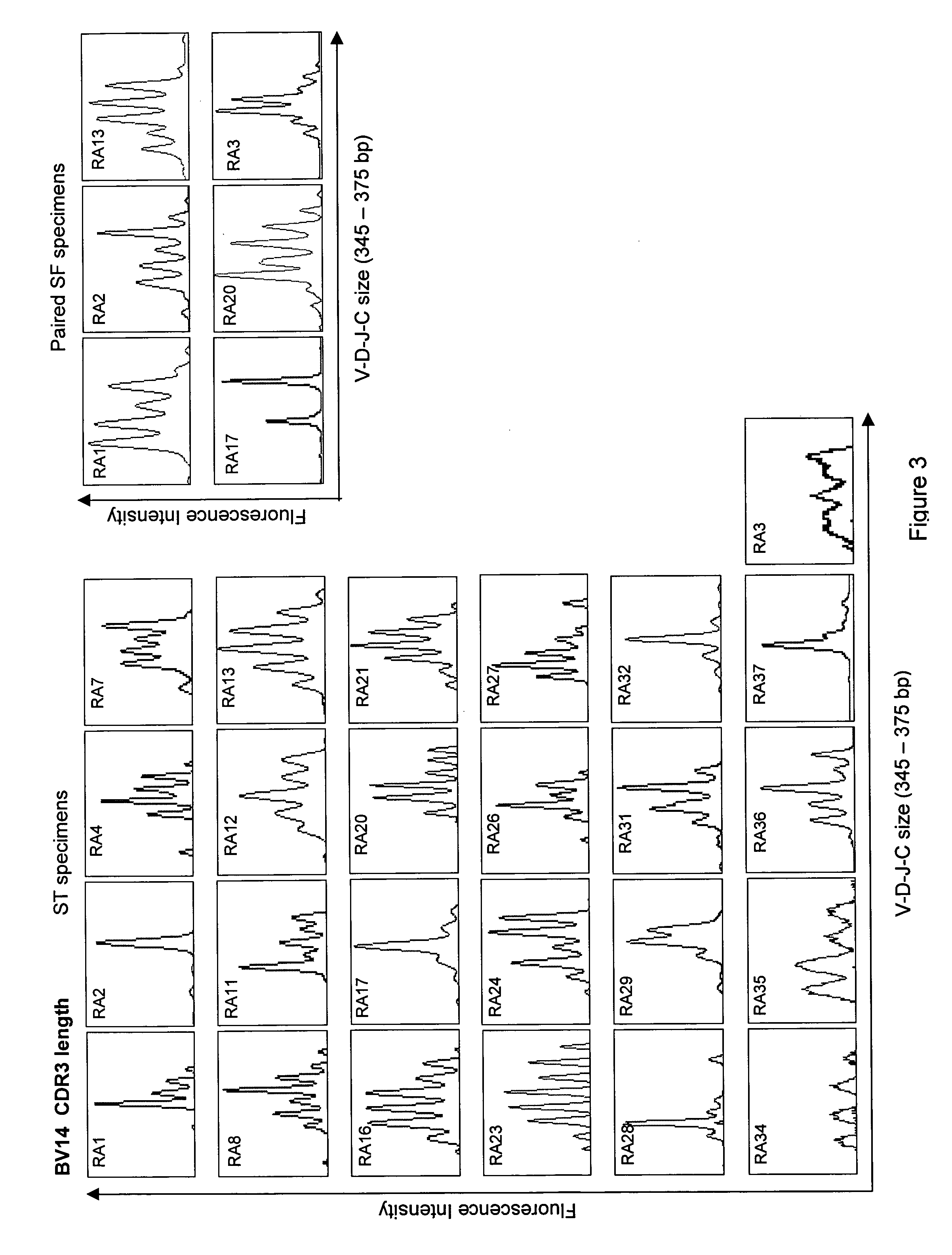T cell receptor CDR3 sequence and methods for detecting and treating rheumatoid arthritis
a t cell receptor and cdr3 technology, applied in the field of t cell receptor cdr3 sequence and methods for detecting and treating rheumatoid arthritis, can solve the problems of complicated bv gene analysis using regular or semi-quantitative pcr, significant increase in the difficulty of identification of common cdr3 structural features, and unclear whether, so as to prevent the onset of rheumatoid arthritis and the effect of preventing
- Summary
- Abstract
- Description
- Claims
- Application Information
AI Technical Summary
Benefits of technology
Problems solved by technology
Method used
Image
Examples
example 2
[0071] RNA Extraction Protocol
[0072] Total RNA was extracted from peripheral blood (PB), synovial fluid (SF) or synovial tissue (ST) experimental materials (PB, SF and ST samples) using the TRIZOL RNA isolation kit (GIBCOBRL, Carlsbad, Calif.). 50-100 mg of ST was homogenized by DEPC-treated mortar and pestle in 1 ml of TRIZOL reagent. Cells from PB and SF were directly lysed in 1 ml of TRIZOL reagent. Chloroform (0.2 ml) was added in 1 ml of TRIZOL and mixed vigorously. The preparation was centrifuged and mixed with isopropyl alcohol to precipitate RNA according to the manufacturer's protocol.
example 3
[0073] HLA Genotyping
[0074] PBMC specimens obtained from all patients were analyzed for HLA DR and DQ genotypes. Briefly, genomic DNA was extracted from EDTA-treated blood of patients and HLA-DRB1 and HLA-DQB1 alleles were determined by PCR with sequence-specific primers (28) using the high resolution SSP UniTray (PEL-FREEZE Clinical System, Brown Deer, Wis.). The primer sets amplifing the alleles were described by the international nomenclature committee of WHO (http: / / www.anthonynolan.org.uk / HIG / index.html). The panel of HLA-DRB1 alleles and HLA-DQB1 allele were analyzed according to the manufacturer's protocol.
example 4
[0075] Protocols for Determination of BV Gene Usage in Synovial and Blood T Cells by Real-time PCR Analysis
[0076] 25 TCRBV and TCRBC gene segments were cloned by using TA Cloning.RTM. kit (Invitrogen, San Diego, Calif.) and One Shot.RTM. TOP10 E.coli competent cells (Invitrogen, San Diego, Calif.) according to the manufacturer's protocol. The oligonucleotide sequences of the BV-specific primers are shown in Table 1. cDNA was synthesized from RNA using random primers and Superscript II (Invitrogen, Carlsbad, Calif.) in a 20-.mu.l reaction. TCR BV gene expression was analyzed by real-time quantitative PCR. An internal reference control for BV-BC amplification and a non-template control containing no cDNA were added to each reaction. Real-time PCR was performed in 96-well optical PCR plates on an ABI 7000 Sequence Detection System (Applied Biosystems, Foster City, Calif.). Briefly, an aliquot of cDNA sample (0.7 .mu.l) was mixed with 25 pairs of BV-specific primers and 1 pair of BC pri...
PUM
| Property | Measurement | Unit |
|---|---|---|
| concentration | aaaaa | aaaaa |
| volume | aaaaa | aaaaa |
| pH | aaaaa | aaaaa |
Abstract
Description
Claims
Application Information
 Login to View More
Login to View More - R&D
- Intellectual Property
- Life Sciences
- Materials
- Tech Scout
- Unparalleled Data Quality
- Higher Quality Content
- 60% Fewer Hallucinations
Browse by: Latest US Patents, China's latest patents, Technical Efficacy Thesaurus, Application Domain, Technology Topic, Popular Technical Reports.
© 2025 PatSnap. All rights reserved.Legal|Privacy policy|Modern Slavery Act Transparency Statement|Sitemap|About US| Contact US: help@patsnap.com



